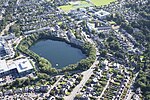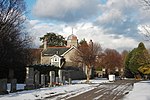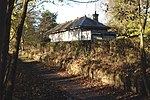Macaulay Institute
Agricultural research institutes in the United KingdomAgriculture in ScotlandCharities based in AberdeenEconomy DirectoratesEnvironment of Scotland ... and 5 more
Environmental research institutesGovernment researchPublic bodies of the Scottish GovernmentResearch institutes in ScotlandUse British English from January 2018
The Macaulay Institute, formally the Macaulay Land Use Research Institute and sometimes referred to simply as The Macaulay, is a research institute based at Aberdeen in Scotland, which is now part of the James Hutton Institute. Its work covers aspects such as landscape, soil and water conservation and climate change.
Excerpt from the Wikipedia article Macaulay Institute (License: CC BY-SA 3.0, Authors).Macaulay Institute
Macaulay Drive, Aberdeen City Craigiebuckler
Geographical coordinates (GPS) Address Phone number Nearby Places Show on map
Geographical coordinates (GPS)
| Latitude | Longitude |
|---|---|
| N 57.133333333333 ° | E -2.1583333333333 ° |
Address
The James Hutton Institute
Macaulay Drive
AB15 8QH Aberdeen City, Craigiebuckler
Scotland, United Kingdom
Open on Google Maps







